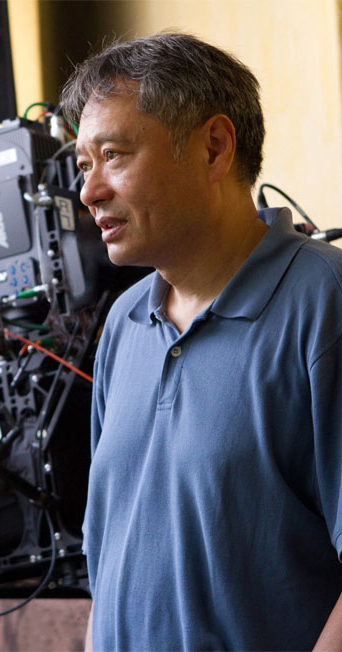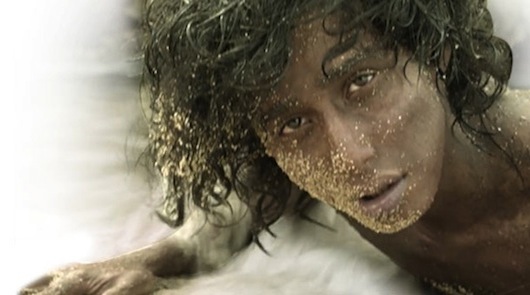 Academy Award winning Director Ang Lee’s latest movie begins with charming promise and develops into a thrilling adventure.
Academy Award winning Director Ang Lee’s latest movie begins with charming promise and develops into a thrilling adventure.
Like Scorsese did with Hugo, Ang Lee uses LIFE OF PI’s simple story to spin off in bold visual directions, balancing on the razor’s edge between fantasy and outright surrealism that provides some of the most gripping and gorgeous images on screen this year.
It is a film about when all you have ever known is lost, how you find your courage. Then begins a life of Adventure…, life of Hope…, life of triumph…, Life of Pi.
Ang Lee attempts perhaps his most ambitious directorial feat to date with Life of Pi, a movie based on the bestselling and zealously adored 2001 novel by author Yann Martel.
Even those who haven’t read the book are probably vaguely aware of the story: a teenage boy from India named Pi (a young actor from Delhi, Suraj Sharma) loses his entire family in a shipwreck and somehow finds the will to survive nearly a year floating on the Pacific Ocean – with only a hungry Bengal tiger from his father’s zoo to keep him company.
The film’s opening sequence, set at the Pondicherry zoo where Pi lives with his family, is a lyrical and beautiful introduction to the combination of CGI and real animals which populate the film, as well as the 3D effects, which are brilliantly sharp. We spend some time seeing Pi grow up and experiment with following every religion he comes across, as well as get training in the dangerous life of a zookeeper– especially to stay well clear of the tiger.
When Pi is a teenager his family decides to sell the zoo and move to Canada, bringing the animals with them on a cargo ship to sell in North America. The ship sinks in a violent storm, and Pi is left as the only human survivor in a lifeboat that, at first, contains a hyena, an injured zebra and a Bengal tiger.
Life of Pi depicts the book’s grand ideas with unexpected tenderness. It melds a harrowing high-seas adventure with a dreamy meditation on the very nature of storytelling. Life of Pi is visually stunning and powerful drama that teaches us much about faith. The sheer number of world religions given a shout-out in the film – Hindu, Christian, Muslim, Buddhist. In India, the young son of a zoo owner collects world religions the way other kids collect stamps. “They were my superheroes,” Pi says, checking off a list of deities.
The film takes a while to get going, like someone roused from their morning meditation, with lots of flowers and candles and people wearing kindly, fixed smiles suggesting enlightenment, or as if they had been hit around the head with a brass pot. But the second act shifts the film from a lazy and comfy litany of introductions to a riveting fantasia of pure cinema.
And it’s not all just glittery poetry, Life of Pi contains several sequences of sheer terror, including an amazing shipwreck scene, and like the Bengal tiger with whom our hero Pi (Suraj Sharma), you never know when it might rear back and devastate you.
Before Lee, the project had numerous directors and writers attached. Earlier studio, Fox 2000 Pictures announced a partnership with M. Night Shyamalan to direct the film. Shyamalan was attracted to the novel particularly because its protagonist also comes from Pondicherry in India.
But later Shyamalan moved out of the project, “I was hesitant to direct because the book has kind of a twist ending. And I was concerned that as soon as you put my name on it, everybody would have a different experience.”
 After having various other writers & directors on board in and out, finally in February 2009, studio approached Ang Lee to direct the film. For Studio, it took eight months of pure patience and egging to get Ang Lee to accept the project. On this he replies “The book chose me”.
After having various other writers & directors on board in and out, finally in February 2009, studio approached Ang Lee to direct the film. For Studio, it took eight months of pure patience and egging to get Ang Lee to accept the project. On this he replies “The book chose me”.
In May 2010, Lee and producer Gil Netter proposed a reported budget of $100 million, at which the studio balked, placing the project’s development on hold for a short time.
Meanwhile, David Magee was hired to write the screenplay and Lee spent several months looking for someone to cast as Pi.
A great fan of Ingmar Bergman’s films, Ang Lee says, his journey to “Life of PI” started when he read the book ten years ago.
He accepts very humbly that it’s a difficult book to adapt both economically and artistically.
 That’s the reason why he’d thought of it as a daunting task. The story of a man and beast drifting in the Pacific was too profound and too spiritual to be made into a practical and /or in expensive film.
That’s the reason why he’d thought of it as a daunting task. The story of a man and beast drifting in the Pacific was too profound and too spiritual to be made into a practical and /or in expensive film.
In October 2010, after 3,000 men auditioned, Lee chose to cast Suraj Sharma, a 17-year-old student and an acting newcomer as young Pi, Irrfan Khan as his adult version and Tabu as Pi’s mother.
Filming began in Taichung and Kenting, Taiwan, Montreal, Canada, and India in January 2011.
Ang Lee is one of only seven living directors who have won the Directors Guild of America Award more than once. The others are Steven Spielberg (3 times) and two-time winners Clint Eastwood, Ron Howard, Francis Coppola, Oliver Stone and Milos Forman. However, Lee is unique in this group and being the only one not to have directed a best picture Oscar winner. “Life of Pi” could break this.
Born in 1954 in Pingtung, Taiwan, Ang Lee has become one of today’s greatest contemporary filmmakers. He graduated from the National Taiwan College of Arts in 1975 and then came to the U.S. to receive a B.F.A. Degree in Theatre/Theater Direction at the University of Illinois at Urbana-Champaign, and a Master’s Degree in Film Production at New York University.
Conceived from the start as the director’s first 3D venture, ‘Pi’ is among the rare ones that integrate the expensive process instead of simply showing off or scaring. Ang Lee orchestrates the film’s demanding visual, emotional, and thematic elements as a true maestro conducting with a carefully honed sense of dynamics.
Behind-the-Scenes Featurettes of Ang Lee’s LIFE OF PI
Immersing himself in the latest technology — 3D, digital paint boxes, motion capture and control – as Martin Scorsese did in last year’s Hugo, Lee summons delights with his fingertips. But where Hugo was cold to the touch, Life of Pi feels warm-blooded, the perfect summation of the principle powering Lee’s entire career: still waters run deep. You see it both in the Zen minimalism of his compositions – check out the shots of sky reflected in a glassy ocean, the boat suspended in the middle as if hanging in thin air – and the sonar-like skill with which he sounds out the emotional depths of Martel’s tale.
There isn’t a dull moment in the film, and there are about 300 worthy of a “wow.” A near-perfect film, one of the must-experience films of the year and destined to be a classic.
The Oscar winning director says that although long and diverse, his route through his films has helped him understand human nature. May it be PUSHING HANDS, WEDDING BANQUET, EAT DRINK MAN WOMAN, SENSE AND SENSIBILITY, THE ICE STROM or his Oscar winners- CROUCHING TIGER, HIDDEN DRAGON, BROKEBACK MOUNTAIN or LUST, CAUTION and even the odd one out- the HULK, they have all led him on his own path to understand and comprehend human nature. This path has been so rare and precious to him, that he looks back with humility and prides both.
Ang lee believes that each film is a question. He makes films because he wants to find the answer. The day all the answers are found, there will be no more Cinemas.
Finally long wait is over. Life of Pi is being released in India in November’12. A must watch for all the students of Institute of Moving Images- the Film school.




2 Responses to When all you’ve ever known is lost…, find courage !